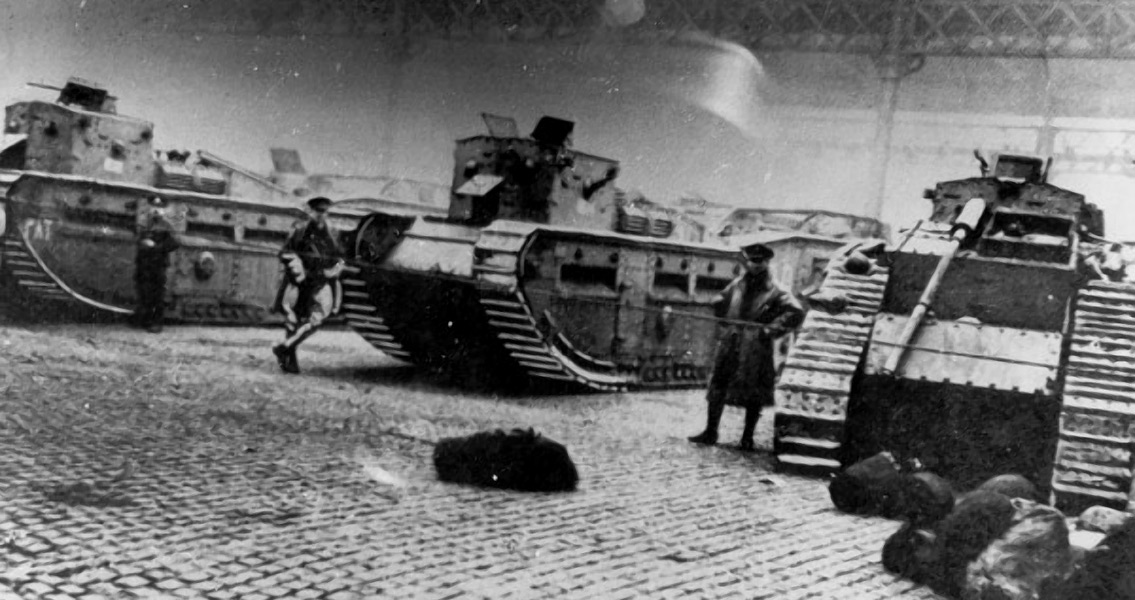<![CDATA[Protest erupted on the streets of Glasgow in January 1919 as part of the 40 Hour Strike, culminating in the Battle of George Square on 31st January. The sheer scale of the 40 Hour Strike makes it one of the most important periods in the history of British labour relations, and yet it is often overlooked in the history books. Significantly, it serves as a reminder of the heavy hand the British government often used in attempts to quell labour unrest. At the start of the twentieth century Glasgow was a city vital to the British economy, a hub of heavy industry with almost half of the world's ships at that time built in ship yards along the river Clyde. Conditions for workers however, were still firmly rooted to the standards of the nineteenth century. Workers were poorly paid and worked long hours - typically 54 hours a week, starting at 6am each day. The situation had fueled political unrest, ship yards became a breeding ground for the spread of radical politics, while a powerful, organised labour movement had grown in the city - one conscious of the power workers could wield through collective bargaining. The Glaswegian labour movement aspired to remedy a number of workers' issues, and by far one of the most popular causes was a reduction of the working day. In the aftermath of the First World War, the organisers of the Clyde Workers' Committee (CWC) saw an opportunity to win reform. The government needed to find jobs for returning soldiers. The leaders of CWC reasoned that by reducing the hours of current workers, vacancies would appear to make up the production short fall, providing employment opportunities for the ex-servicemen. At a meeting of union leaders on 18th January, 1919, the decision was made to call a strike demanding a 40 hour week. On Monday 27th January the strike went into effect. 70,000 workers stopped working, and Glasgow's industry ground to a halt. The British government panicked. Coming just two years after the Russian Revolution, and a few months after the Spartacist Revolt in Germany, the government feared a communist uprising. Scottish Secretary Robert Munro was unequivocal in his assessment, saying events in Glasgow should not be called a strike but a "Bolshevist rising". Although there were undoubtedly some Bolsheviks in Glasgow's trade unions, many historians now claim that the government overestimated their influence. The media's coverage of the events reveals the paranoia of an imminent communist revolution in the UK, it probably also contributed to that paranoia. Events of the 29th January give an insight into how ungrounded those fears were. A delegation from the CWC went to the City Chambers to issue their demands to the government and call for a negotiation. The only tangible threat was a continuation of the strike, a far cry from the violent seizing of power seen in Russia. Nevertheless, tanks and troops were sent north to Scotland, and plans were drawn up to arrest strike leaders. The government was preparing itself for a riot. On Friday 31st January over 60,000 demonstrators gathered in George Square to hear the reply from the Lord Prevost, who was negotiating with a delegation from the CWC. Significantly, the demonstrators were carrying a red flag, which would create a powerful image in media descriptions of the event. Most accounts claim the demonstrators acted peacefully - meaning the reasons for what happened next remain shrouded in mystery. The police charged the protesters, batoning them seemingly indiscriminately. Chaos descended, and the demonstrators rallied and started to fight back. David Kirkwood, an organiser of the strike who had been negotiating in the City Chambers, went out to try and restore order in the square. He was swiftly batoned and arrested by police, highlighting the disorder that had descended over the city. Skirmishes between police and demonstrators continued throughout the day, in different neighbourhoods around Glasgow. Although there were no fatalities, by the end of the day 34 protesters and 19 police had been injured, meaning the day is sometimes referred to as 'Bloody Friday'. Over the coming days leaders of the CWC were arrested, with two convictions taking place. On the morning of the 1st February, the citizens of Glasgow awoke to find six tanks parked in the city's cattle market, and armed English soldiers patrolling the city. A powerful message was being sent by the government. Eventually the leaders of the national engineering unions concluded an agreement for a 47 hour week, not the 40 hours hoped for but still a substantial concession. The government's heavy handed response to the events however, and the violence that erupted between peaceful demonstrators and police, give a clear insight into attitudes towards the labour movement, socialism and communism at the turn of the twentieth century.]]>
The Battle of George Square Sees Tanks in Glasgow
